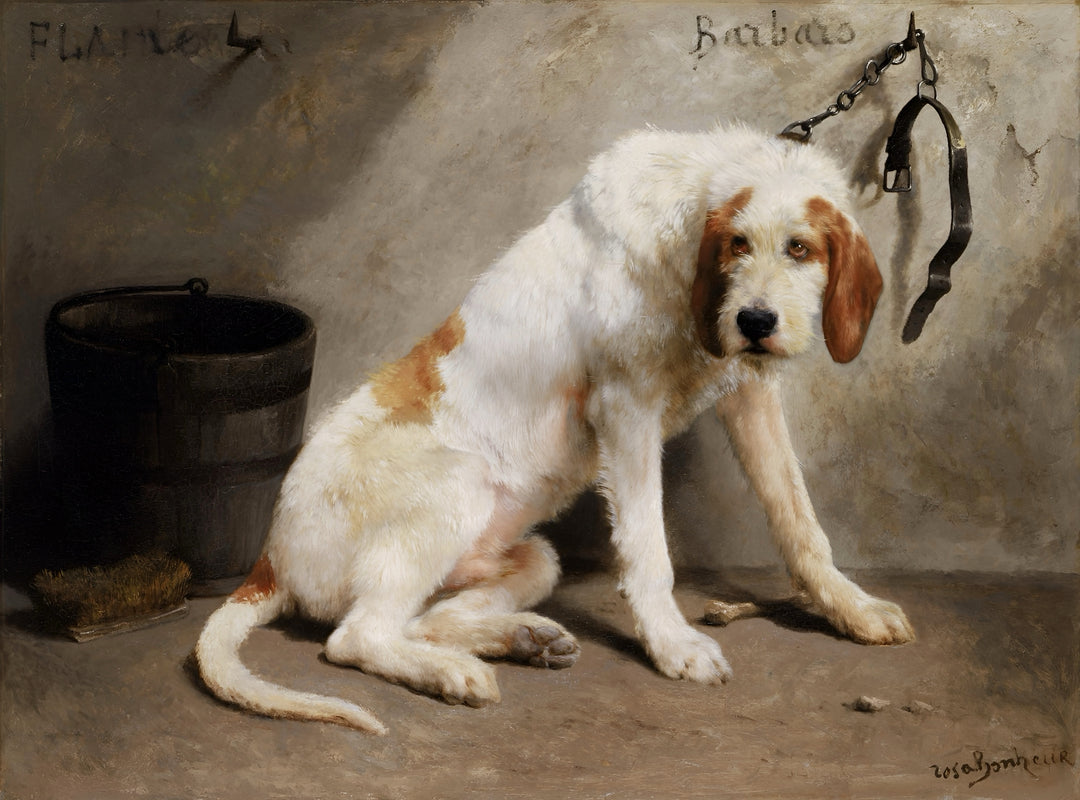
Barbaro after the Hunt - Rosa Bonheur
| Author: | Rosa Bonheur |
|---|---|
| Title: | Barbaro after the Hunt |
| Original location: | Philadelphia Museum of Art, Philadelphia, USA |
| Year: | 1858 |
In "Barbarian After the Hunt" (1858), Rosa Bonheur breaks with the pictorial tradition that glorified hunting and focuses attention on the fatigue and vulnerability of the tracking dog. In this work, the animal (Barbarian), a Grand Griffon Vendéen originally from France, appears chained to the wall, with drooping ears and a visibly exhausted body, in a state of enforced rather than voluntary rest. The dog's dull gaze and the chain around its neck suggest not only a physical pause, nor a voluntary one, but above all, a sense of emotional exhaustion.
Realism in this painting is evident in the precision of the fur, which combines white and ocher tones to reflect the animal’s rough texture after a day of hunting. Bonheur applies a loose yet controlled brushstroke in areas of light and shadow, achieving a three-dimensional effect without resorting to artifice. The austere, monochromatic background reinforces the feeling of loneliness and abandonment, in contrast to the vitality usually expected in a hunting scene.
Unlike the dog portraits common in Romanticism, where animals symbolized status and power, Bonheur in this canvas seeks to humanize the hunting dog by presenting it at its most fragile, as in "Study of Two Dogs," and thus contrasts with her other compositions such as "Metamort and Flambeau" or "A Limier Briquet Hound." This shift in focus influenced later animalist representation, where the relationship between the animal and its environment took on a more introspective dimension. Painters like Edgar Degas would apply this same principle in their studies of horses, moving away from idealization to show the effort and fatigue of bodies in motion.